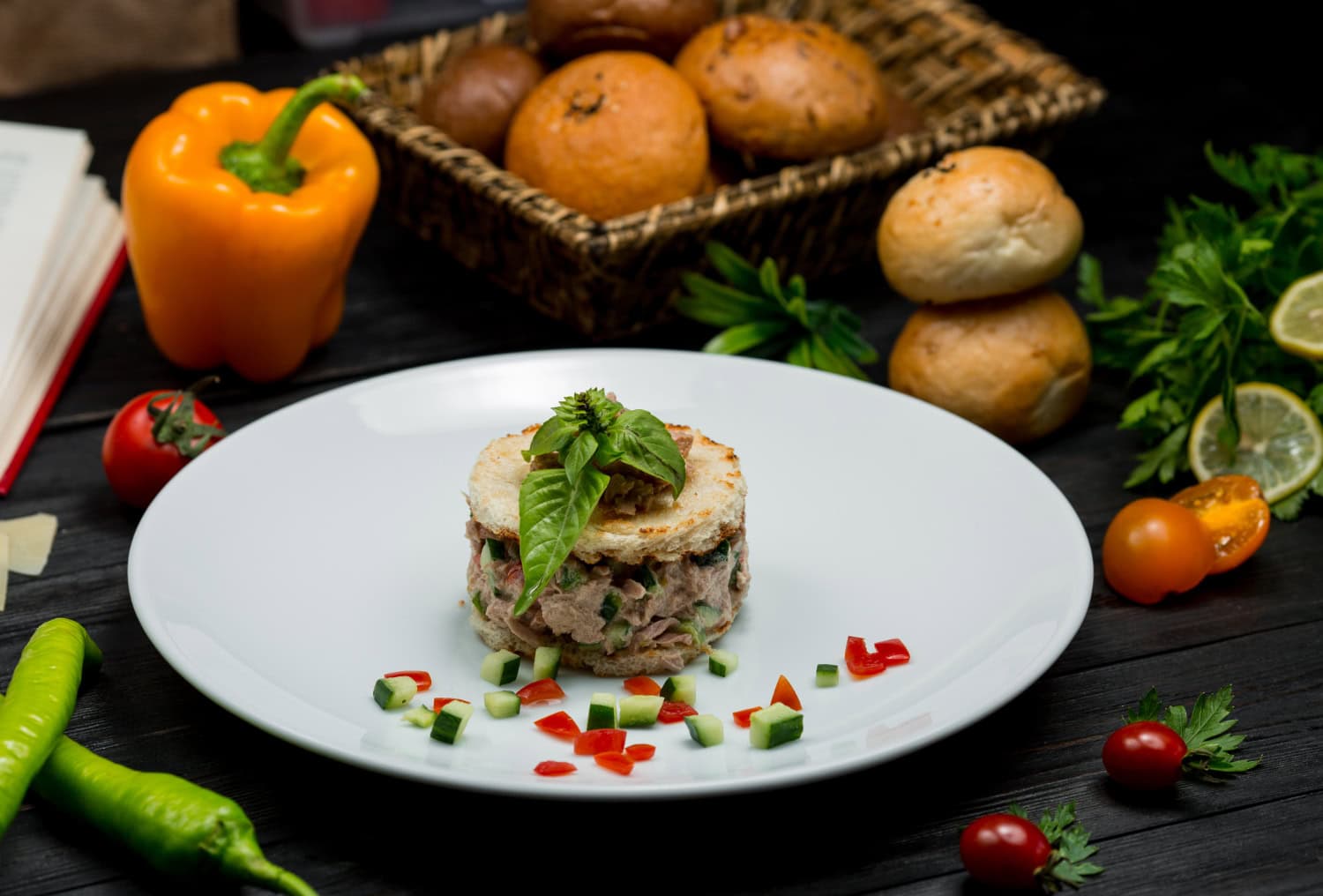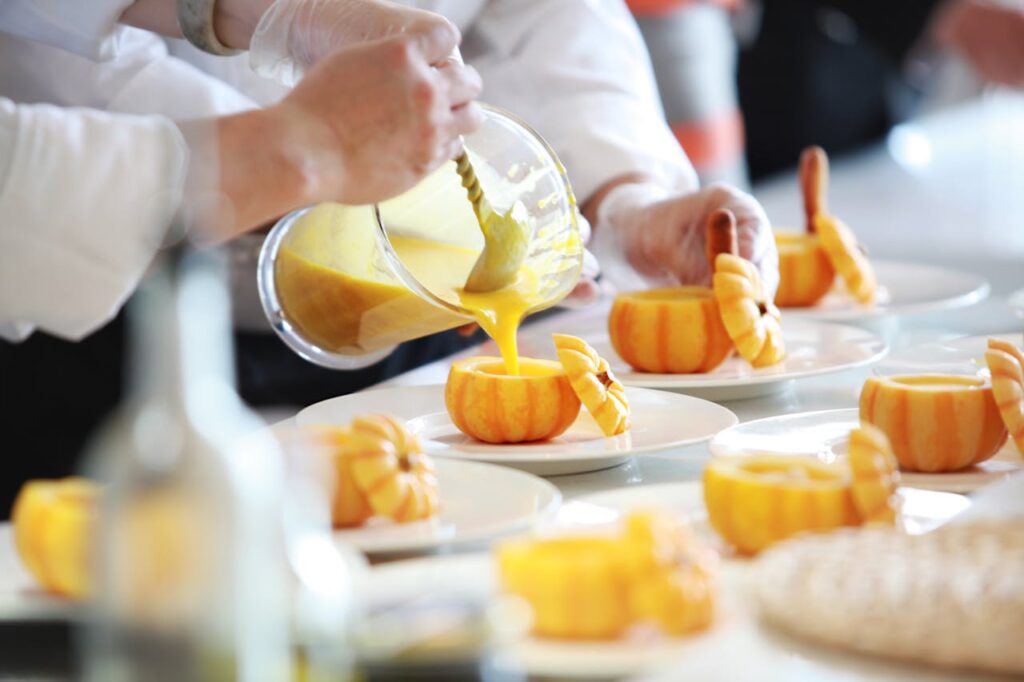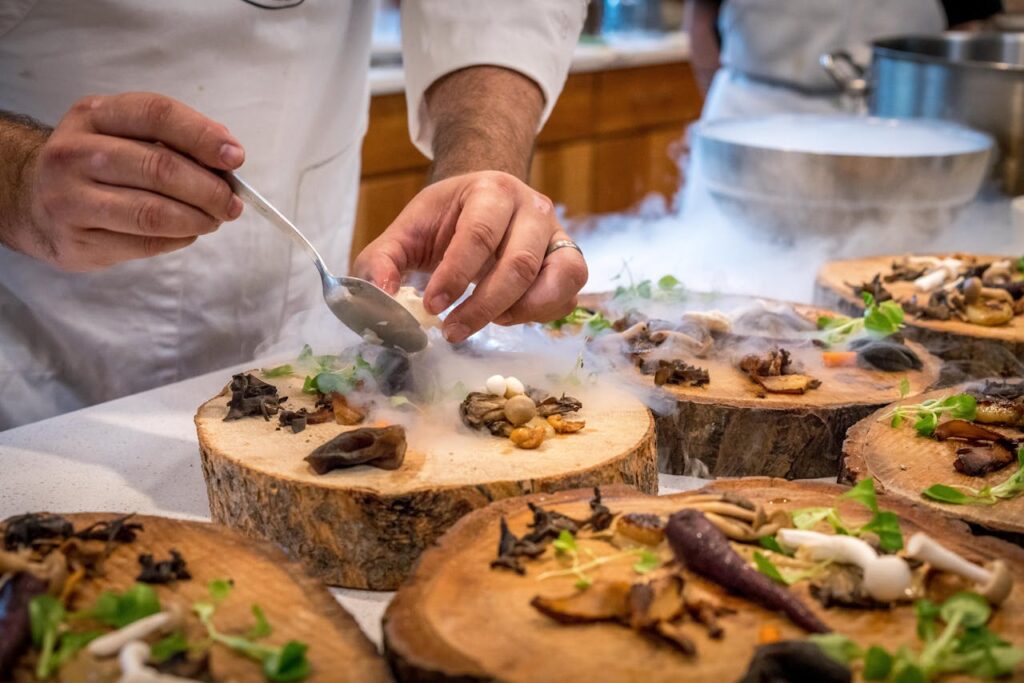
By Jermaine Thomas May 22, 2025
When reflecting on the most unforgettable meals you’ve experienced, it’s likely that it wasn’t solely the flavor that made an impression. The hues, the layout, the balance or unexpected elements on the dish probably grabbed your interest prior to the initial taste. This is not a coincidence. The manner in which food is served significantly influences our perception of its taste, quality, and overall enjoyment.
In the hospitality industry, appearance goes beyond mere decor. It molds perception, affects hunger, and transforms even the most basic ingredients into something remarkable. This is the point at which food plating psychology becomes relevant. It combines art, science, and feeling to transform meals into experiences.
The Psychology of First Impressions
Humans have a natural tendency to form opinions fast. We only need a few seconds to form opinions about new experiences, according to research. Social interactions, surroundings, and yes, food are all affected by this. We see things before we can smell or taste them. Our visual system instantly starts to interpret information, evoking memories, expectations, and feelings. Our brains interpret a dish as more palatable and of higher quality if it appears vibrant, well-presented, and intentionally prepared.
Psychological research on food plating supports this phenomenon. For instance, when the same food is presented in an appealing way, people often think it tastes better. The appearance of a food can even affect how fresh or healthy it is perceived to be. In this way, the saying “we eat with our eyes first” is not just poetic; it is rooted in how the brain processes stimuli and sets the stage for the rest of the dining experience.
How Visual Appeal Influences Taste Perception
The impact of visual attractiveness in food goes beyond initial perceptions. It also influences our perception of taste. Research has demonstrated that the appearance of a dish can change our perception of its sweetness, saltiness, or richness. A well-known experiment had participants sampling the same dessert shown in various formats. The version featuring stylish decorations, balanced arrangement, and creative touch was consistently rated as tastier, despite all versions having the same ingredients.
This is due to the fact that our senses do not operate independently. Visual cues combine with scent, tactile sensation, and flavor to form a complete perception. When food appears appetizing, our brain gets us ready to savor it, adjusting our expectations in a manner that can truly amplify its taste. In this sense, good plating is not just about beauty. It becomes a tool for enhancing the multisensory experience of eating.

The Role of Symmetry, Color, and Composition
Effective food presentation follows certain visual principles that are often borrowed from photography, painting, and design. These include symmetry, color balance, negative space, and focal points. Symmetry brings a sense of order and professionalism. While not every plate needs to be perfectly mirrored, balanced portions and alignment guide the eye and communicate intentionality.
Color plays a huge role in catering aesthetics. A variety of colors on a plate can signal freshness and nutrition. For example, bright greens, reds, and yellows are associated with fruits and vegetables, which are linked to health and vitality. On the other hand, dull or monotone dishes may appear heavy or uninviting. Composition includes the arrangement of ingredients to create depth and visual flow. Using height, layering, and garnishes helps break the flatness of a plate and adds dimension. Thoughtful placement also ensures that the guest gets a taste of every element in each bite.
These techniques are not just for fine dining. Even casual meals can benefit from basic attention to presentation, which adds value and makes the food more enjoyable.
Emotional Connections Through Presentation
Apart from sensory perception, aesthetically pleasing plating engages emotion. The view of a beautifully presented plate can evoke nostalgia, joy, or intrigue. A dish designed to resemble a garden might evoke childhood memories for someone. A simple design can appear contemporary and sophisticated. A cozy presentation can bring to mind feelings of warmth and comfort. This emotional aspect is crucial in hospitality. When chefs and caterers synchronize presentation with the theme or atmosphere of an event, they craft a unified experience that appears deliberate and engaging.
For instance, a spring ceremony could showcase pastel-hued dishes garnished with edible blooms, in harmony with the time of year. A corporate event may favor a polished, balanced layout that signifies professionalism. These choices add subtle emotional cues that influence how guests feel during the meal. In this way, catering aesthetics become a language that communicates far beyond the plate.
Cultural Influences on Food Presentation
Food plating is also influenced by cultural norms and expectations. In Japanese cuisine, for example, presentation is treated with as much reverence as taste. Dishes are arranged to reflect balance, harmony, and seasonality, with the plate itself considered part of the artwork. In contrast, some Western styles emphasize heartiness and abundance. A rich stew served in a rustic bowl might evoke comfort and generosity rather than elegance.
Understanding these cultural dimensions is important for professionals in hospitality. Presentation must reflect the type of cuisine and meet the expectations of the target audience. What feels refined in one context might seem sparse in another. That said, global exposure and social media have expanded people’s expectations. Diners are now more aware of diverse plating styles and increasingly appreciate visually engaging meals, regardless of the tradition.
The Rise of Instagram and Visual Food Culture
Food presentation is more important than ever in the current digital era. In addition to eating food, diners are taking pictures and sharing it on social media sites like Instagram, Pinterest, and TikTok. This gives food presentation an additional level of significance. Beautifully presented food turns into moments to be shared. This is free advertising for eateries, coffee shops, and caterers. With just one image, a well-designed plate can reach hundreds or thousands of potential customers.
This has led to a new era where social media is taken into consideration when designing presentations. In order to grab the viewer’s attention in a crowded feed, bright lighting, vivid colours, and dramatic plating techniques are becoming more and more common. While some may criticize this trend as superficial, it highlights just how influential food plating psychology has become in modern dining culture. Today, the visual impression of a dish can impact not only one diner’s experience but the brand perception of the entire establishment.
Practical Applications for Caterers and Chefs
Understanding the psychology of presentation is valuable for anyone involved in food service, especially in catering. Since catered events often include large groups and timed service, presentation must balance aesthetics with efficiency.
Here are some ways caterers apply catering aesthetics effectively:
- Preparing plating templates for consistency across portions
- Using uniform garnishes to enhance visual appeal
- Choosing serviceware that complements the event’s color scheme
- Layering elements to add height and depth
- Incorporating edible flowers, microgreens, or sauces as finishing touches
Caterers also consider logistics. Foods that hold shape and color under heat lamps, or that can be pre-portioned without losing visual appeal, are ideal for maintaining presentation standards at scale. By combining efficiency with elegance, caterers reinforce quality and create a lasting impression that guests carry with them long after the event ends.

First Impressions and Business Value
A dish’s initial impression often turns into a brand’s initial impression. Whether it’s a plated dinner, pop-up event, or wedding buffet, the presentation of the food sets the mood. This initial moment can determine whether a company is remembered or forgotten in competitive markets. Consumers associate professionalism with excellent presentation. It shows that the chef or caterer respects the diner, values quality, and pays close attention to details. Reviews, recommendations, and repeat business are all influenced by these characteristics.
Additionally, pricing can be justified by presentation. Customers are more receptive to paying more for a dish that is elegantly prepared. At this point, food’s aesthetic appeal turns into a competitive advantage as well as a psychological tool.
Conclusion
It is impossible to overestimate the significance of first impressions when dining. Food plating psychology demonstrates how a dish’s appearance affects our perceptions, experiences, and memories of it. The visual component of food is crucial to perception and satisfaction, whether at a fine dining establishment or a catered event. Investing in catering aesthetics is more than just a stylistic choice for chefs, caterers, and food entrepreneurs. It is a calculated move that improves the overall dining experience, supports branding, and affects consumer behaviour.
In a world where people taste with their eyes before they eat, beautifully plated dishes are not optional. They are essential. They turn meals into memories, elevate simple ingredients into something special, and reflect the passion behind the plate. And that, perhaps, is the most powerful impression of all.